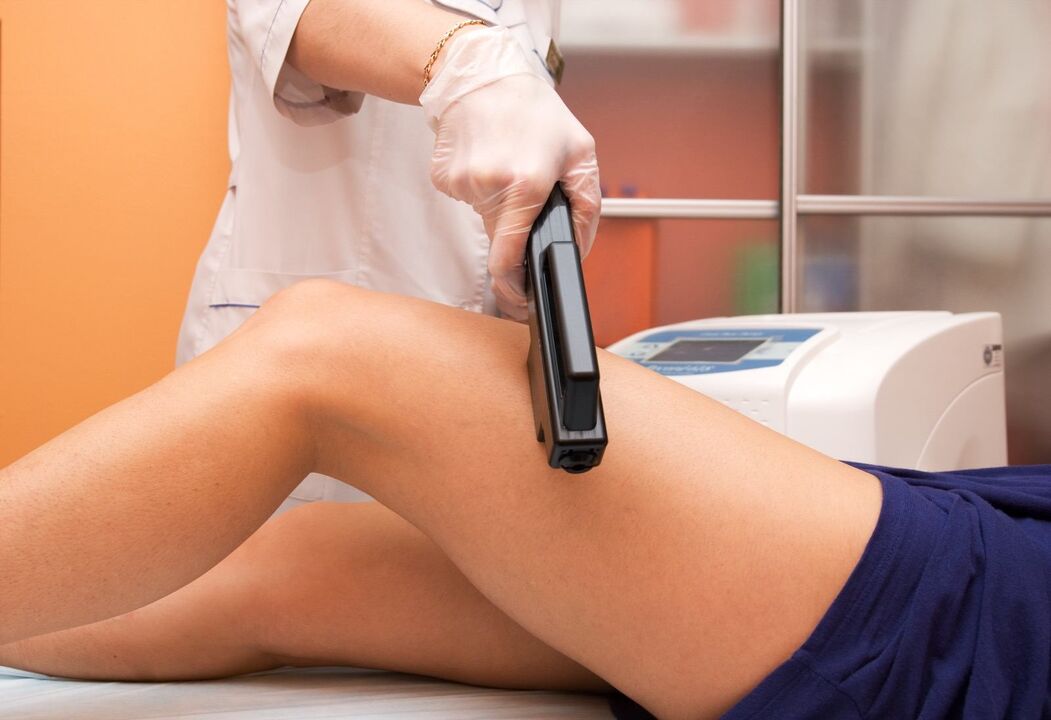
Osteoarthritis of the knee joint (gonarthrosis) is a disease of the knee cartilage, in which it is gradually destroyed and replaced by connective tissue. Knee osteoarthritis can occur suddenly, when there is no sign or cause of joint damage. In other cases, the onset of the disease is associated with trauma or other joint diseases.
Features
In a healthy knee joint, the cartilage is a kind of lining that does not allow the bones to touch each other, eliminating the possibility of damage when walking. Diseased cartilage cannot cope with this function, therefore, signs of stiffness appear in the joint during movement, accompanied by pain. This condition becomes permanent due to internal pathological changes, when the thinning of the cartilaginous tissue leads to thickening of the bone and creates conditions for the appearance of bone spurs - osteophytes, which cause acute pain.
Causes and Symptoms
Osteoarthritis of the knee joint develops gradually, but we do not notice the pronounced symptoms of cartilage damage due to the fact that the knee joint is held in the correct position by the thigh muscles and four ligaments. It is this anatomical structure that smooths the manifestation of the main symptoms at the onset stage of the disease.
Reliable causes of the disease have not yet been identified by medicine. However, there are factors that under certain conditions can play the role of the cause of this disease. These include injury, strenuous exercise, and being overweight. As a separate reason, one can consider such a violation as a hormonal failure.
Patients with suspected osteoarthritis of the knee joint have symptoms:
- pain in the knees of an aching nature (possibly in the lower leg);
- pain syndrome associated with climatic changes;
- increased pain when climbing stairs, after a long walk or standing;
- reduction of pain at rest (at night and at rest);
- starting pains (after rest breaks);
- knee joint stiffness;
- pain when flexing/extending the leg;
- cracking, swelling of the joint.
This condition of the knee joint requires urgent medical attention due to the risk of complications, when effusion can begin to build up in the joint. The doctor conducts an external examination of the patient and prescribes an examination, based on the results of which treatment methods will be selected.
Survey
The initial stages of the onset of such a pathology as arthrosis of the knee joint are not visually manifested in any way. However, after some time the patient notices signs of deformity of the knee, as well as a characteristic curvature along the axis of the lower leg (directed inward). There is also a crunch when you have to bend your leg.
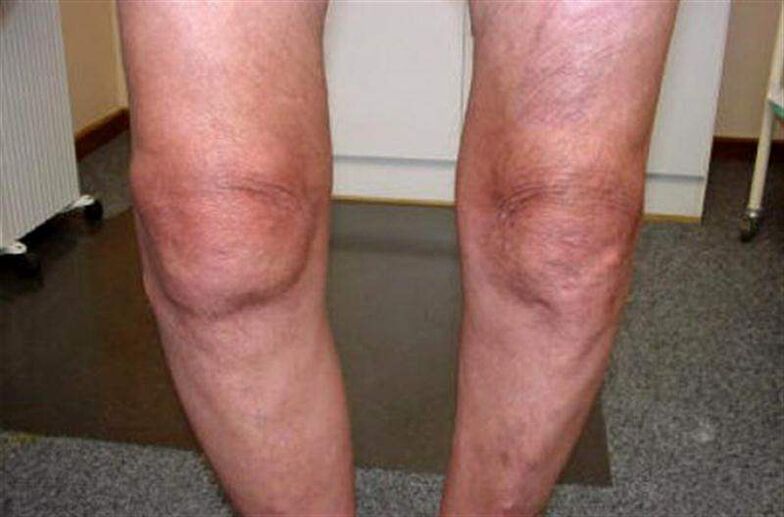
The presence of pain, limited movement of the knee forces a person to consult a doctor and undergo an examination. To do this, he must pass tests and take an x-ray of the diseased joint. If these measurements are not enough to confirm osteoarthritis of the knee joint, magnetic resonance imaging is performed. Based on the collected data, the doctor chooses the best methods of treatment.
Treatment methods
Modern medicine has sufficient means to treat arthrosis of the knee joint. Also in clinical practice, new approaches to treatment by traditional methods are being developed and actively applied.
The basic medical treatment for knee disease consists of therapies combined with adjuvants.
An example is physiotherapy, which is part of restorative medicine physical therapy, which is complemented by psychological work with patients.
Helps treat osteoarthritis of the knee such as restorative methods such as massage, exercise, water treatments. To alleviate the condition, the patient is recommended to wear knee pads or a bandage. It is impossible to treat gonarthrosis without observing the correct diet, which should contain white, not red meat, sardines, salmon, vegetables, fruits and enough water (up to 7 glasses).
Severe cases of the disease are treated promptly, with full or partial dentures using sparing methods.
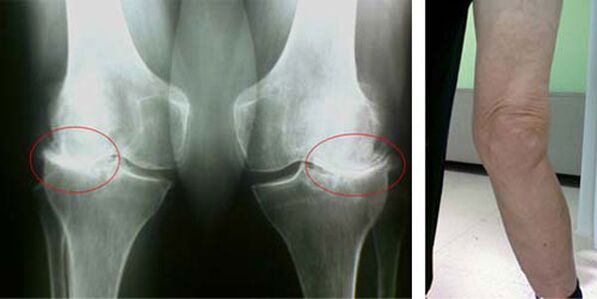
Medical treatment
In the treatment of gonarthrosis with drugs, the following are actively used:
- Nonsteroidal anti-inflammatory drugs. The prescribed pills help treat a condition such as swelling and swelling in the knee joint;
- Chondoprotectors. Preparations contain substances that nourish the cartilage tissue, which heals its structure and restores the cartilage coating of the joint. If the cartilage is almost completely destroyed, chondoprotectors are not used in the treatment of arthrosis of the knees (usually typical of stage 3);
- Vasodilator tablets. With their help, you can treat night pains that occur in the knee joint due to spasms of small vessels.
- Intra-articular injections of corticosteroid hormones are prescribed to treat inflamed knee joints. Injections relieve swelling and swelling much faster, thereby improving the patient's condition. However, such injections can be done 1 time in 2 weeks due to the high probability of their side effects. If a person has symptoms of anatomical changes in the joints, for example, bone deformity, there is no point in giving injections into the joint.
In the early stages of gonarthrosis, uncomplicated by joint edema (synovitis), the patient may receive injections of chondoprotectors with enzymes. They help to partially restore cartilage tissue, and the downside is the need to inject drugs with a cycle of 5-10 injections.
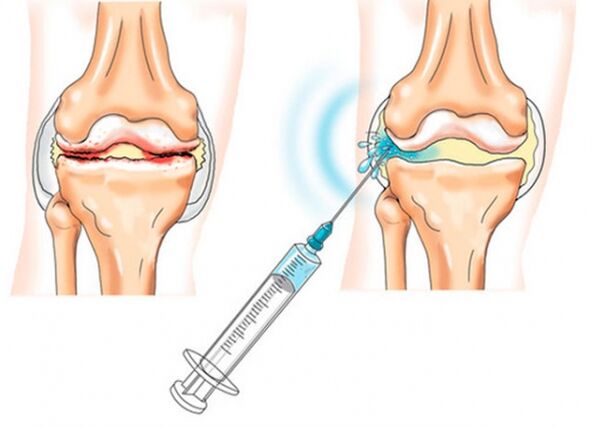
Good treatment results (in 80% of cases) can be achieved by traction (stretching of the knee joint).
It is performed using a special device or manual therapy. Such traction allows to increase the distance between the bones, which leads to a decrease in the load on the joint and the restoration of its performance.
Ointments
In drug therapy for the treatment of joints, various types of ointments and gels are actively used, consisting mainly of natural substances. In pharmacies, ointments can be purchased without a prescription, but a consultation with the attending physician about its use will not hurt. You should also know that the ointment does not cure knee disease, but only supplements the main treatment.
Effectively relieves inflammation in the joints of the ointment based on NVPS (nonsteroidal anti-inflammatory drugs).
Warming ointments containing capsacin are used to improve blood circulation.
Ointments containing salicylic acid are used to treat knee inflammation.
Ointments - chondoprotectors are successfully used in the early stages of treatment of the disease to restore damaged cartilage. In order for the active substances of the ointment to better penetrate the focus of inflammation, it is necessary to use them in combination with a physiotherapeutic procedure - phonophoresis.
Support measures
Massage
In the complex treatment of arthrosis of the knee joints, therapeutic massage is actively used, which contributes to the normalization of blood circulation in the damaged joint and restores its functions. Massage not only heals, but also awakens the body's defenses, which allows you to quickly restore the efficiency of the articular apparatus.
With inflammation of the joints, massage on the knee area and general healing massage are usually used. It is to achieve a greater effect that doctors recommend combining general massage with segmental massage performed in the knee area.
Since the massage has a positive effect on muscle tone, the patient's muscle strength increases and the performance lost by the knee joints is restored. Therapeutic massage begins with caresses, then rubbing is performed to improve joint mobility. Next comes stretching. The massage ends with a beneficial vibration for the muscles (not intense). All of these techniques are included in the massage to reduce pain and restore freedom of movement in the knees.
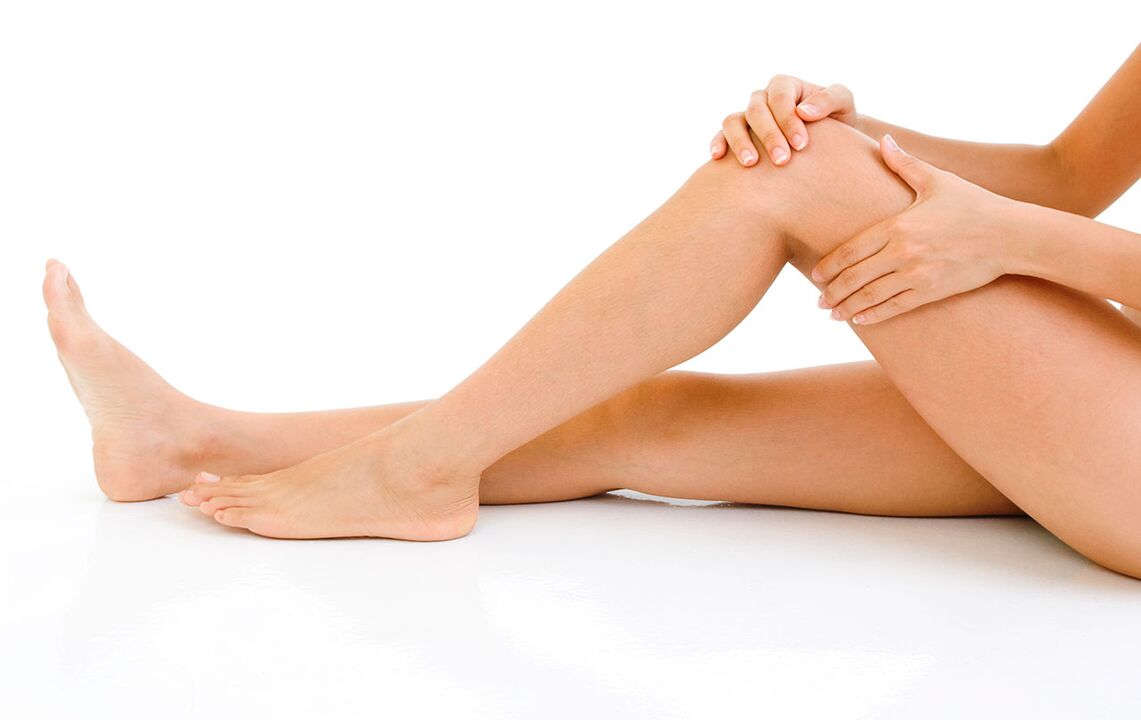
Knee pads and splint
To reduce the load on the knee joint, as well as on the muscles, ligaments and tendons, patients are recommended to put a bandage on it. The knee bandage helps to evenly distribute the pressure on the joint apparatus and thus stimulates the regeneration of damaged tissues.
Since the bandage is a product, the range of such products is distinguished by a variety of colors and corporate styles. The dressing is also made of metal, ceramic, plastic, etc. All these characteristics are secondary. The main thing is that you need to buy knee pads or a bandage only after consulting a doctor.
Which knee pads to wear are chosen based on their purpose. The required bandage in the postoperative period should be carefully sized. These knee pads are a rigid bandage.
It is best to wear underwear made of cotton fabric or other natural material under the knee pads. Dog hair knee pads have a pronounced healing effect, warming the joint and relieving inflammation.
The most popular type is a neoprene bandage, reinforced with spiral ribs, which provides fixation of joints and muscles. The orthopedic bandage is often used as protection against damage during sports.
You should choose open or closed knee braces depending on the nature of the pain. In severe pain, knee pads should have stiffeners and completely cover the joint. For mild pain, open knee pads should be worn.
A highly requested novelty are the knee pads made of elastane or polyester. This bandage will last a long time and is easy to maintain.
Conclusion
A distinctive feature of modern approaches in the treatment of arthrosis of the knee is a combination of traditional methods and techniques based on new generation drugs, as well as improved surgical methods. Among new generation drugs, biostimulants, chondoprotectors, synovial fluid protectors are widely used. Forms of knee osteoarthritis that are difficult to treat conservatively can now be treated surgically with low invasiveness, i. e. arthroplasty, arthroscopy and endoprostheses.



















